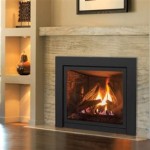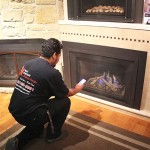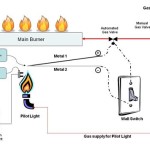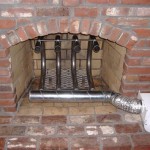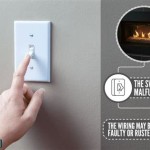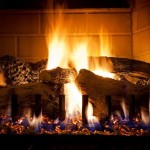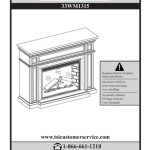Fireplace Wall Vents: Essential Aspects for Enhanced Home Comfort
Fireplace wall vents are indispensable components of any fireplace system, fulfilling crucial functions that contribute to the efficient and safe operation of your hearth. Understanding their importance and essential aspects is vital for ensuring optimal performance, comfort, and safety in your home.
Purpose and Function
Fireplace wall vents serve two primary purposes:
1. **Ventilation:** They provide a passage for combustion gases and smoke to escape from the fireplace and exit the home, preventing them from accumulating indoors and causing harm to occupants. 2. **Combustion Air Supply:** They allow fresh air to enter the fireplace, providing the oxygen necessary for the fire to burn efficiently and maintain a steady flame.Types of Fireplace Wall Vents
Fireplace wall vents come in various types, each with its own advantages and applications:
* **Louvered Vents:** These vents feature adjustable louvers that allow for controlled airflow. They offer versatility in managing ventilation and air supply requirements. * **Fixed Vents:** These vents have a fixed opening and are typically used for supplying combustion air. They provide a constant flow of air, ensuring adequate oxygen for the fire. * **Damper Vents:** These vents incorporate a damper that can be adjusted to regulate airflow. They offer precise control over ventilation, allowing you to optimize performance and minimize heat loss.Location and Installation
The placement of fireplace wall vents is crucial for their effectiveness. They should be positioned:
* **Near the Floor:** To allow combustion gases to escape efficiently. * **Opposite the Fireplace Opening:** To facilitate cross-ventilation and ensure even distribution of fresh air for combustion. * **Properly Sealed:** Gaps around the vent can cause air leaks, compromising ventilation and safety. Ensure a tight seal between the vent and wall to prevent such issues.Maintenance and Troubleshooting
Regular maintenance is essential for maintaining optimal performance of fireplace wall vents. Inspect them periodically for:
* **Clogged Louvers:** Clean any debris or dust obstructing the airflow. * **Rusty Damper:** If the damper is rusty, lubricate it or replace it if necessary. * **Damaged Vents:** Look for any cracks or damage that could affect ventilation or air supply.Importance of Proper Venting
Adequate ventilation through fireplace wall vents is paramount for several reasons:
* **Carbon Monoxide Safety:** Improper venting can lead to the buildup of carbon monoxide, a toxic gas that can cause serious health issues. * **Fire Prevention:** Insufficient airflow can starve the fire of oxygen, potentially leading to hazardous conditions such as backdrafting or creosote buildup. * **Energy Efficiency:** Proper ventilation minimizes heat loss through the fireplace, improving the efficiency of your heating system.By understanding the essential aspects of fireplace wall vents, you can ensure proper ventilation, combustion efficiency, and safety in your home. Proper maintenance and troubleshooting, coupled with professional inspection and cleaning when necessary, will extend the life of your fireplace wall vents and enhance your overall home comfort.

Wall Mounted Gas Fireplace Vent Inspecting Hvac Systems Internachi Forum
Gas Fireplace Venting Explained Heat Glo
Gas Fireplace Venting Explained Heat Glo

Wall Mounted Gas Fireplace Vent Inspecting Hvac Systems Internachi Forum

Fireplace Makeover Reveal Beneath My Heart
Direct Vent Fireplace Is Melting Our Siding And Soffit Would Love Your Advice Hearth Com Forums Home

Power Vent Flare Fireplaces

What Are The Best Ways To Vent A Gas Fireplace Zoroast

Any Fireplace Experts Out There On Houzz Need Help With Ugly Vents
Direct Vent Fireplace Is Melting Our Siding And Soffit Would Love Your Advice Hearth Com Forums Home
Related Posts

